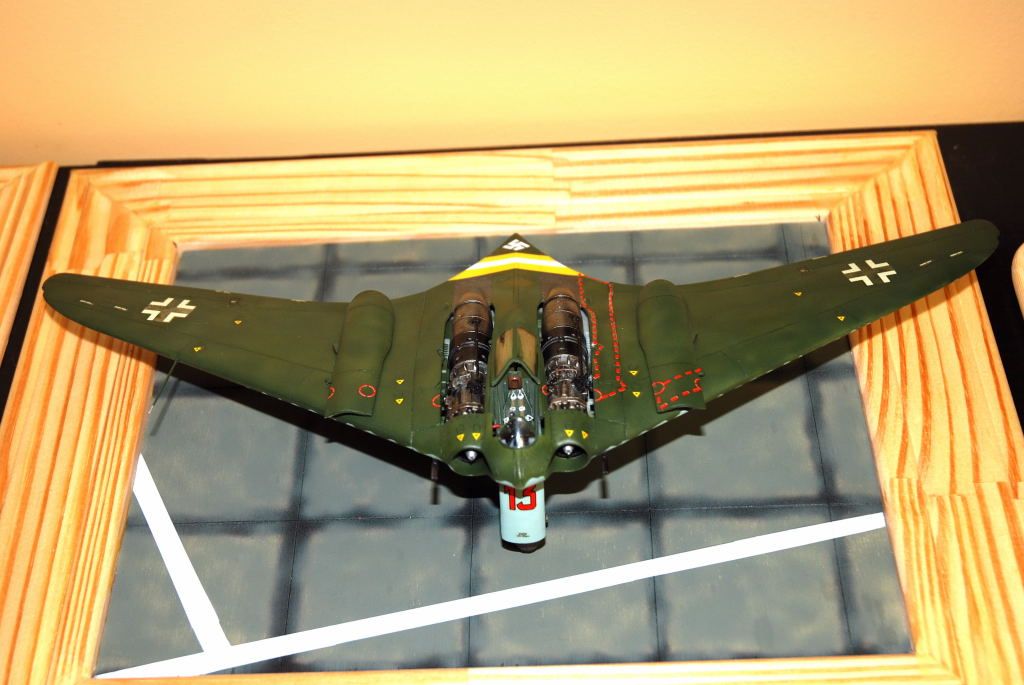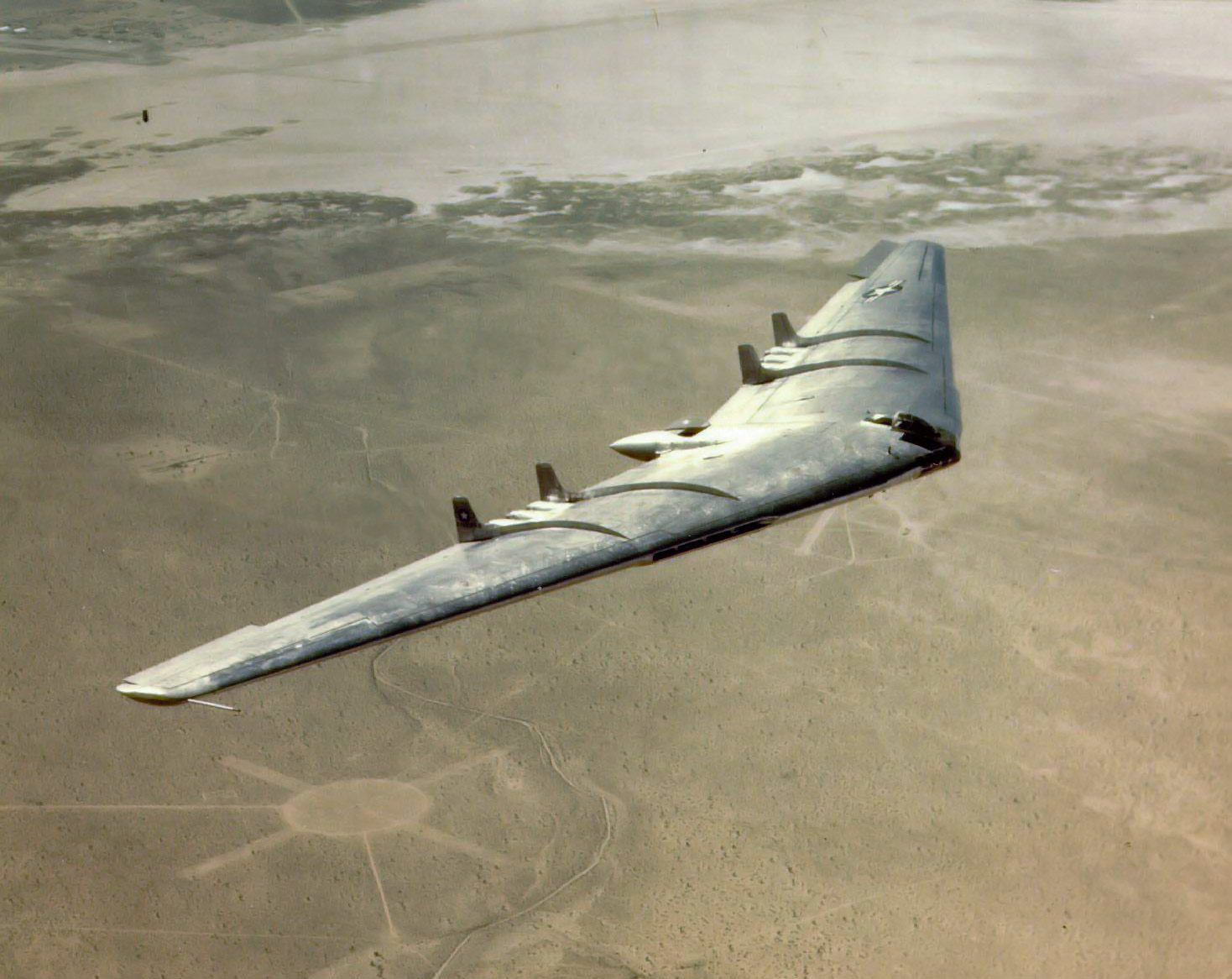Uksubs; the F-80 Shooting Star was for all practical purposes a prototype in that it never saw combat in WWII and was of limited production. The F-80 did see combat in Korea, but by then was obsolete and was replaced by the F-86; which was based on German swept wing research and was very similar to those paper project jets you cited, as was the Russian MIG-15. The de Havilland Vampire was very similar to the Focke Wulf Flitzer; a paper design by Kurt Tank. The Flitzer design was somewhat more advanced however, as it had swept wings! Early jets are very interesting.
You are using an out of date browser. It may not display this or other websites correctly.
You should upgrade or use an alternative browser.
You should upgrade or use an alternative browser.
WINGS OF WAR (2 new planes) newsletter. (1 Viewer)
- Thread starter wayne556517
- Start date
uksubs
Lieutenant Colonel
- Joined
- Nov 5, 2006
- Messages
- 7,050
I doubt the de Havilland Vampire was a copy of the **** wolf Flitzer as it was already flying in 1943 ! What interesting about the Mig 15 is they were flying with copy's of the British jet engine which the labour government gave them !!!Uksubs; the F-80 Shooting Star was for all practical purposes a prototype in that it never saw combat in WWII and was of limited production. The F-80 did see combat in Korea, but by then was obsolete and was replaced by the F-86; which was based on German swept wing research and was very similar to those paper project jets you cited, as was the Russian MIG-15. The de Havilland Vampire was very similar to the Focke Wulf Flitzer; a paper design by Kurt Tank. The Flitzer design was somewhat more advanced however, as it had swept wings! Early jets are very interesting.
cnq
Sergeant Major
- Joined
- Oct 10, 2010
- Messages
- 1,611
I agree Terry; debat is good especially when the subject is interesting. I have always conciderd flying wings to be interesting aircraft and the HO 229 was a very innovative version that exceeded the performance of all contemporary jet aircraft. The ME 163 Rocket Interceptor had a speed of 595 mph and the HO 229 even exceeded that; truly amazing for the period. I am very pleased that Thomas Gunn has made a fine model of this exceptional aircraft. The Dragon 1/48 scale styrene kit was the only accurate model previously available and was a bear to build. I have it hanging over my desk as I type this missive. I have a deep interest in early jet aircraft and an extensive library; so its fun to use this knowledge in a friendly debate! I appreciate Uksubs interest in the Meteor. The F4 version with Rolls Royce engines reached a maximum speed of 600 mph in a prototype tested in May of 1945. Concederably faster than the F1 version at 458 mph with the Whipple engines. Meteors saw extensive combat in Korea.
You mean this Dragon Ho229 ^&grin
I built this guy over a year ago.

CNG; Nicely done Dragon model; the engines are very well done!
Uksubs; Thank you for the heads up on the 1/32 HO 229 model; amazing detail! I do not think the Vampire was a copy of the Flitzer; but more of an example of parallel development. Great minds think alike! The Vampire was a better design than the Meteor for an early effort. The Hawker Hunter is a classic design!
Uksubs; Thank you for the heads up on the 1/32 HO 229 model; amazing detail! I do not think the Vampire was a copy of the Flitzer; but more of an example of parallel development. Great minds think alike! The Vampire was a better design than the Meteor for an early effort. The Hawker Hunter is a classic design!
cnq
Sergeant Major
- Joined
- Oct 10, 2010
- Messages
- 1,611
CNG; Nicely done Dragon model; the engines are very well done!
Thanks. Any chance of seeing pics of your Dragon Horten ?
CNG; Mine is not as well built as yours. I built it as an in flight model; no landing gear or engines visable. My vision is not what it used to be so I have moved up scale in models; 1/25 and 1/16 for Panzers and 1/32 and 1/18 for aircraft. The 1/32 HO 229 Uksubs pointed out is the nicest I have seen. I recently built a Revell HE 162 in 1/32; a very nice model complete with engine and cockpit detail for $20.00 The 1/32 HO 229 runs a bit more. I will have to check the exchange rate for the Yen! I like the pressure suited pilot figure; the ceiling for the HO 229 was about 55,000 feet. Thanks for the photo of your model; excellent work!
ivanmoe
Command Sergeant Major
- Joined
- Feb 2, 2013
- Messages
- 2,959
A flying wing is about the worst option for a gun platform - very poor accuracy. The Hortens could build a flying wing to be sure, but knew little about combat aircraft.
One useful by-product of having a fuselage is vertical stability through the "normal" axis and yaw (left/right) stability. The USAF had its own flying wing designs, and attempted to address yaw issues through the use of multiple vertical stabilizers:

Didn't really work out, in that the engineers were never able to get the plane to settle down over a target where accuracy was paramount. As the plane rhythmically oscillated left and right, its payload was thrown hopelessly askew. Same phenomena would have occurred in a fighter, BTW, with bullets flying all over the place. Were it not for "fly-by-wire" computer inputs being applied by the millisecond, the sterling performance of the B-2 bomber wouldn't have been possible.
-Moe
cnq
Sergeant Major
- Joined
- Oct 10, 2010
- Messages
- 1,611
CNG; Mine is not as well built as yours. I built it as an in flight model; no landing gear or engines visable. My vision is not what it used to be so I have moved up scale in models; 1/25 and 1/16 for Panzers and 1/32 and 1/18 for aircraft. The 1/32 HO 229 Uksubs pointed out is the nicest I have seen. I recently built a Revell HE 162 in 1/32; a very nice model complete with engine and cockpit detail for $20.00 The 1/32 HO 229 runs a bit more. I will have to check the exchange rate for the Yen! I like the pressure suited pilot figure; the ceiling for the HO 229 was about 55,000 feet. Thanks for the photo of your model; excellent work!
I'm in 1/18 planes as well and have several in my collection. The 1/32 Horten kit is in my list to buy for this year
And I also built two Revell HE 162 in 1/32 ^&grin
Moe; the photo of the Flying Wing is the Northrop YB-49 the sucessor to the YB-35 which had counterotating props that corrected yaw stability problems. The Airforce Flying Wings were designed as intercontinental atomic bombers; bomb delivery accuracy was not a problem! Hydrogen bombs in the megaton range are very forgiving, especially when detonated as an airburst over a city!
ivanmoe
Command Sergeant Major
- Joined
- Feb 2, 2013
- Messages
- 2,959
The Airforce Flying Wings were designed as intercontinental atomic bombers; bomb delivery accuracy was not a problem! Hydrogen bombs in the megaton range are very forgiving, especially when detonated as an airburst over a city!
There were no USAF Flying Wings deployed as bombers. The aircraft never got past the test stage. A reconnaissance version was also tested, but, likewise, never went into production. Film footage of one YB-49 did appear in The War of the Worlds. As depicted, the aircraft was used in a desperate attempt to deliver earth from alien-life-eradicators! A U. S. Air Force YB-49 taking off to atom bomb the invading Martians:

Found a nice-clip related to the YB-35 and YB-49 which touches on the yaw issue:
http://videos.howstuffworks.com/discovery/30060-strange-planes-the-northrop-xb35-and-yb49-video.htm
Interesting stuff.
-Moe
I stated that the YB-35 and YB-49 were designed as bombers; not that they were deployed. You are correct that the Flying Wings did not go into production. The B-36 was selected as the new intercontenental bomber, replacing the B-29. The research on the Northrop Flying Wings led directly to the design and development of the B-2 stealth bomber. The low radar reflectivity of a Flying Wing planoform was demonstrated first by the Horton HO 229 and also by the YB-49. Although both were only developed to the prototype stage the knowledge gained was invaluable!
Mossie
Private
- Joined
- Feb 5, 2014
- Messages
- 28
The new Arado is parked on a North Sea beach......
I've used a bunch of old stuff, including a D-Day beach mat by JG Miniatures to make an accomodation for the Arado in my little collection.
It's definitely not a piece of art but....it's the best I have for the moment.
Kudos to Tom for his production, the plane is admirably fine detailed and finished
Rob


I've used a bunch of old stuff, including a D-Day beach mat by JG Miniatures to make an accomodation for the Arado in my little collection.
It's definitely not a piece of art but....it's the best I have for the moment.
Kudos to Tom for his production, the plane is admirably fine detailed and finished
Rob


Users who are viewing this thread
Total: 2 (members: 0, guests: 2)

